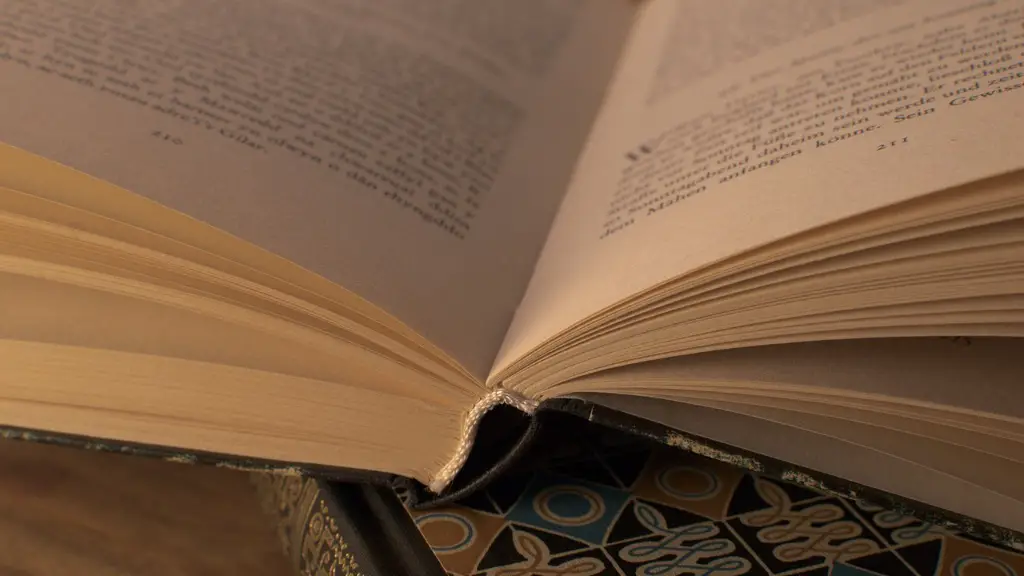Background Information
Punctuation has been used in literature since antiquity. It helps readers better interpret written material and provides a sense of direction. The concept of punctuation came from the ancient Greeks, who initially used the concept for syntactical purposes. The Romans later broadened the use of punctuation by introducing the period, comma, parenthesis, and other punctuation marks. Today, these marks are considered standard and are used in writing everything from reports to novels. In poetry, however, punctuation is not always as easily definable or accepted.
Role Of Punctuation
Punctuation serves as a guide to the interpretation of a poem. It adds pauses, highlights important words and phrases, and provides clarity to complex poems. Punctuation also allows readers to infer meaning through pauses and emphasis on certain words and phrases. Furthermore, the use of punctuation helps to convey the tone of the poem — whether it is humorous, satirical, or serious. Additionally, punctuation is used to decipher lines and stanzas. Without punctuation, it is often difficult to decipher which words belong to a line and how the lines are meant to be read.
Punctuation Mark Guidelines
The most common punctuation marks used in poetry are the period, comma, semicolon, colon, dash, and parentheses. These marks provide subtle cues to both the poet and reader, allowing them to interpret a poem in different ways. The period is generally used to mark the end of a line or stanza, and the comma is used to denote pauses and add equal weight to words and phrases. The semicolon is used to link related thoughts and can be used either in the middle of a line or at the end of a line or phrase. The colon is used to introduce a list and the dash can be used to create a sudden break in the line. Lastly, the parentheses can be used to explain or expand on a word or phrase.
Traditional VS Free Verse Poetry
Poetry can be divided into two different methods — traditional and free-verse. Traditional poetry is typically written in structured formats with prescribed rhyming schemes, meter and line length. The use of punctuation in traditional poetry is essential as the mark of punctuations helps to create the puzzle-like quality to the poem. Free verse, on the other hand, does not require the use of strict rhyme schemes or meter. Free verse poems are typically written in a more conversational style and are open to interpretation. The use of punctuation is less common, but it can still be used to create emphasis, pause, and clarity to the poem.
Use Of Punctuation In Poetry
The use of punctuation in poetry is ultimately a matter of preference and style. Some poets use punctuation to create emphasis, add clarity, and provide rhythmic patterns to their poems. Others prefer to forgo punctuation altogether, allowing their words to stand on their own. There is no right or wrong answer when it comes to the use of punctuation in a poem. As long as the poet is clear in their intentions and has the reader in mind, any punctuation mark can be used effectively.
Expert Perspectives
There are a number of experts who have weighed in on the use of punctuation in poetry. According to poet and playwright John Updike, “Punctuation can help free the poem from its visual framework and add degrees of subtlety and shading to suggest alternate readings.” Author and professor Dr. Richard Huber agrees, adding that “the right punctuation can draw attention to certain parts of the poem and heighten their effect and impact.” Finally, award-winning poet Bob Holman believes that the use of punctuation is essential in poetry because it helps the poet to convey their message clearly.
Analysis and Insights
The use of punctuation in poetry is a vital tool for both authors and readers. Punctuation can help create emphasis and clarity to a poem, while also allowing the reader to infer a deeper meaning from the text. By analysing the punctuation of a poem, a reader can gain insight into the poet’s thoughts, emotions, and intentions. Additionally, understanding the different roles of punctuation marks can assist readers in interpreting a poem more accurately. For example, a comma can be used to denote a pause and a semicolon can be used to link two related ideas.
Different Emotional Triggers
Punctuation marks are often used to convey different emotions within a poem. A period can be used to denote an abrupt ending, while a comma can signify hesitance. A semicolon can signify continuation while a colon can be used to introduce a list. By using the proper punctuation marks, poets are able to suggest different emotions and create a specific atmosphere within their work. For example, a poet may use a period to create a sense of finality or use a colon to add an element of mystery.
Grammatical Structures
Grammatical structures can also be used to evoke certain emotions in a poem. Although punctuation marks can help to create clarity and structure, they are not the only tools poets can use. Poets can also take advantage of metaphors, similes, and other literary devices to further convey their intentions. By creating vivid imagery and crafting intriguing sentences, poets can add depth to their work and draw readers in.
Punctuation and Poetic Licence
Punctuation marks are also used to create poetic license. The use of unconventional punctuation, such as multiple periods or a series of question marks, can be used to create a unique atmosphere within a poem. Similarly, the absence of punctuation can be used to create confusion and ambiguity. By using punctuation in an unexpected way, poets can create a certain mystery that keeps the reader guessing.


